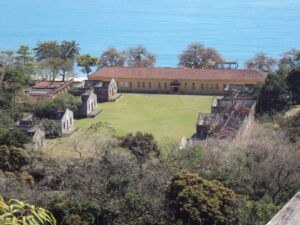Anchieta Island: History, nature and adventure on the coast of São Paulo
Anchieta Island is one of the main tourist attractions of Ubatuba, famous for its prison ruins, beautiful beaches, nature trails, excellent snorkelling spots and the preserved Atlantic Forest in the Anchieta Island State Park.
With 828 hectares, Anchieta Island is the second largest on the São Paulo coast and offers a rich biodiversity, making it an ideal destination for ecotourism.
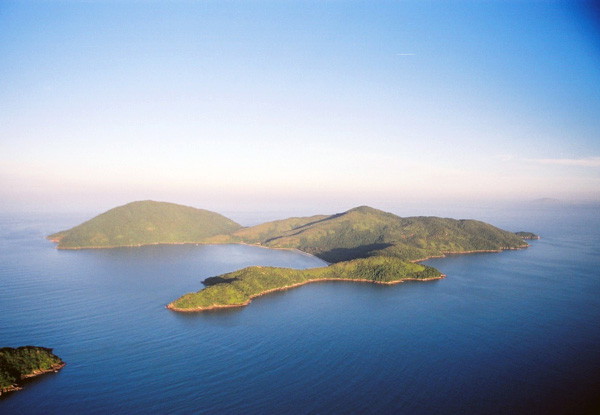
Tourist Attractions
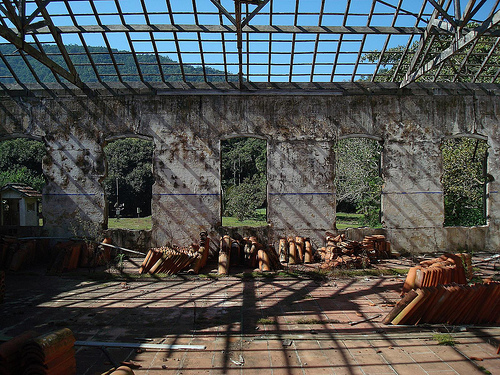
Beaches of Anchieta Island
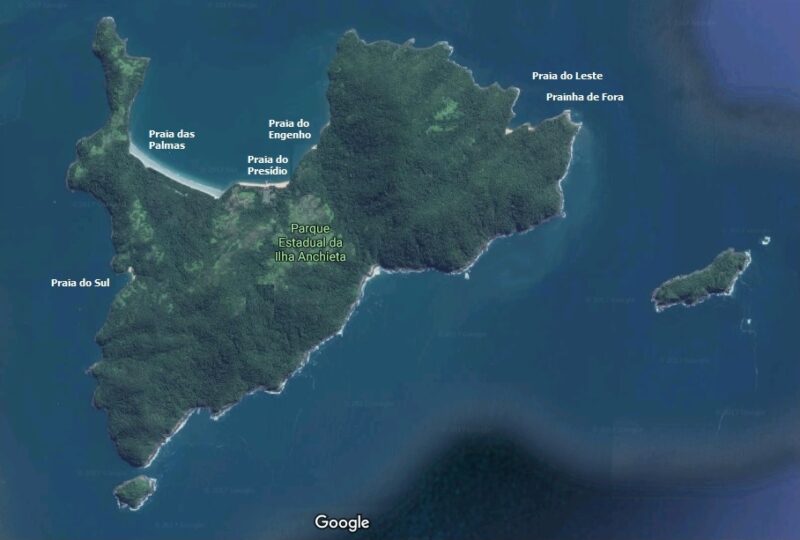
- Engenho Beach: Clear waters, small and quiet.
- Praia das Palmas: Known for its crystal clear waters and peaceful atmosphere.
- Praia do Presídio: Named after the ruins of the island’s former prison, it is a place of great historical and natural interest.
- Praia do Leste: Small and quiet, ideal for swimming and snorkelling, accessible by foot.
- Praia do Sul: Excellent visibility for snorkelling, protected by state law and accessible by schooner.
- Praia de Fora: A more secluded beach, offering a beautiful setting for those who love tranquillity and unspoilt nature.
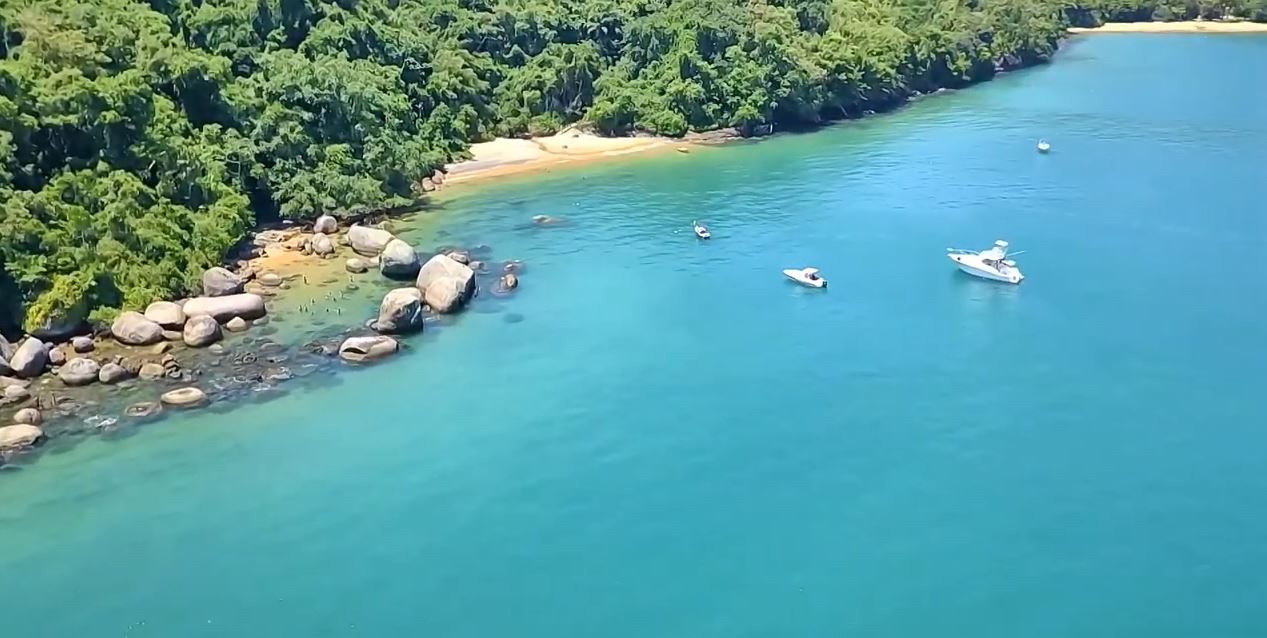
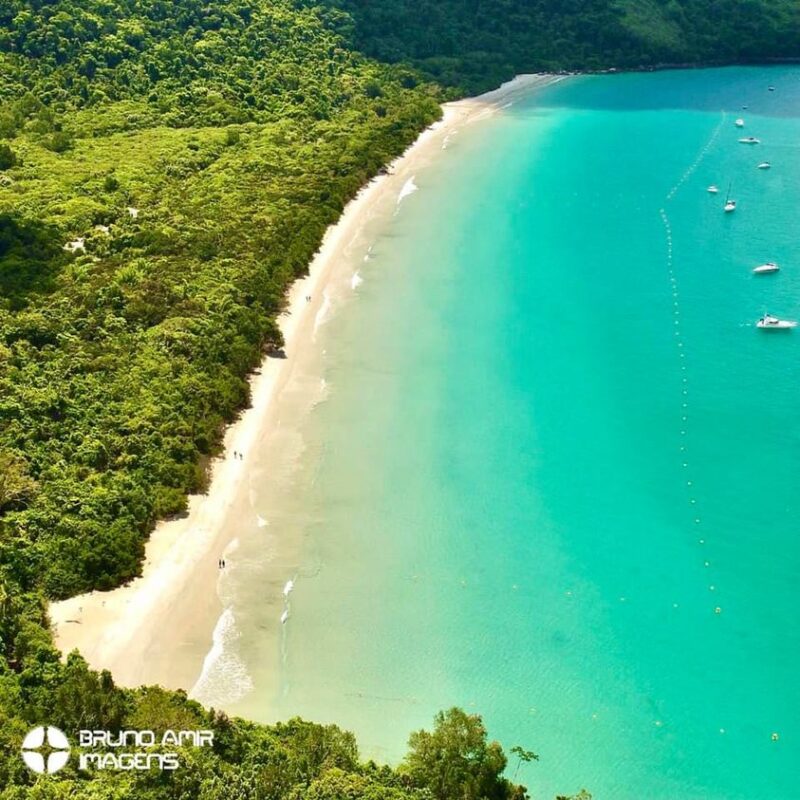
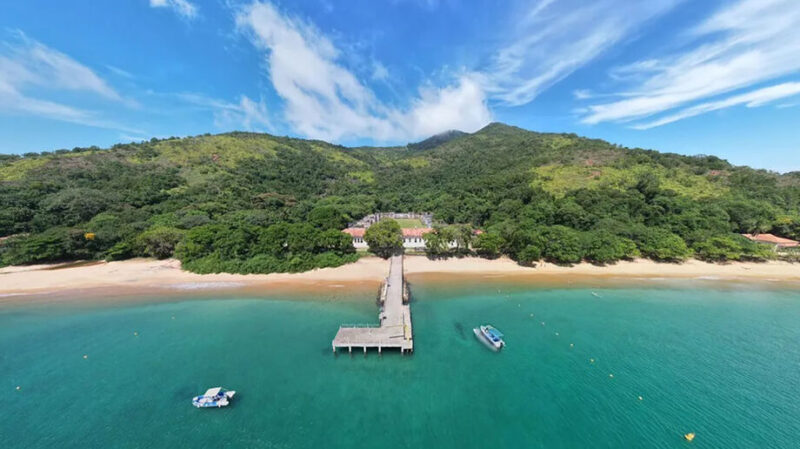
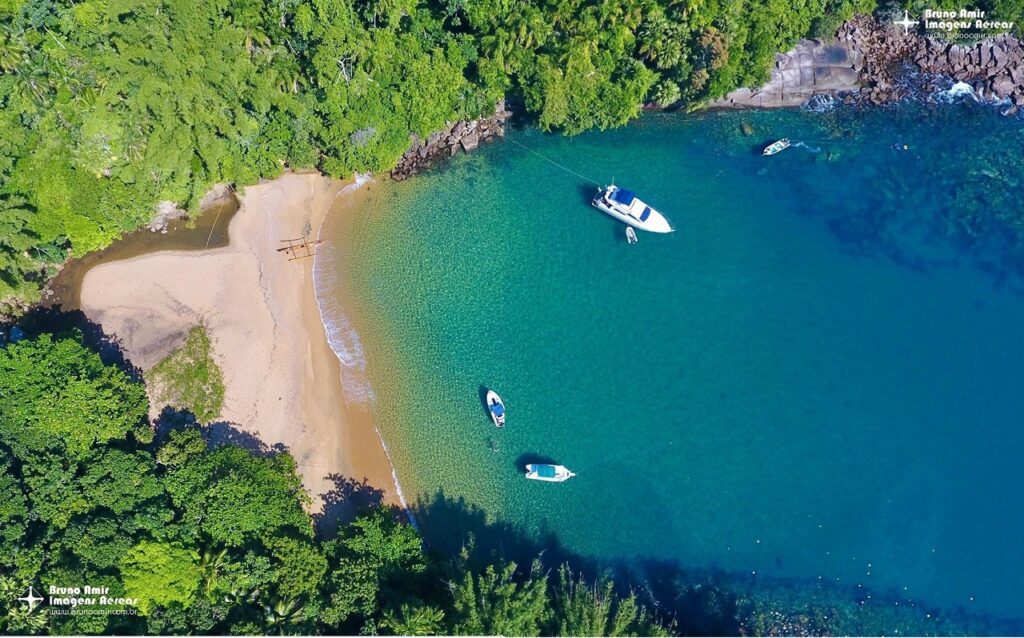
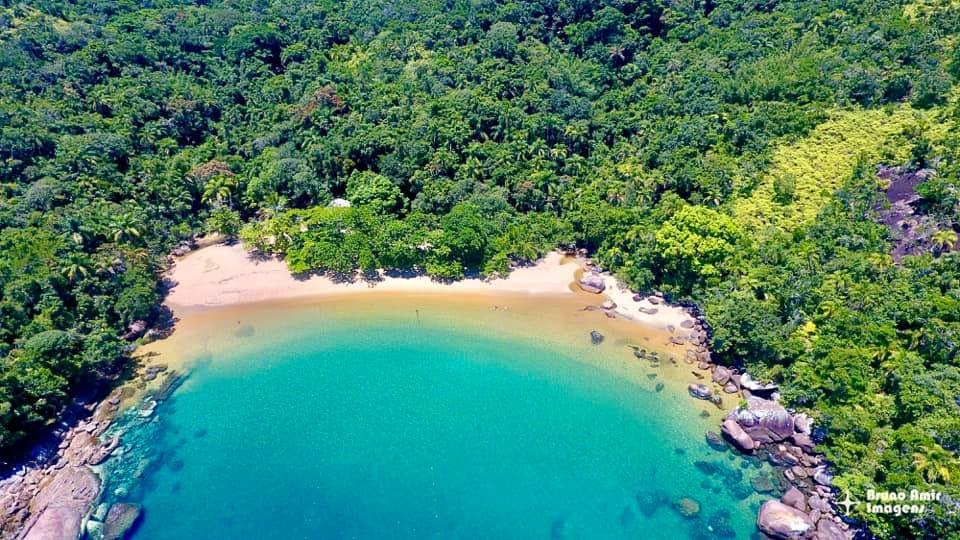
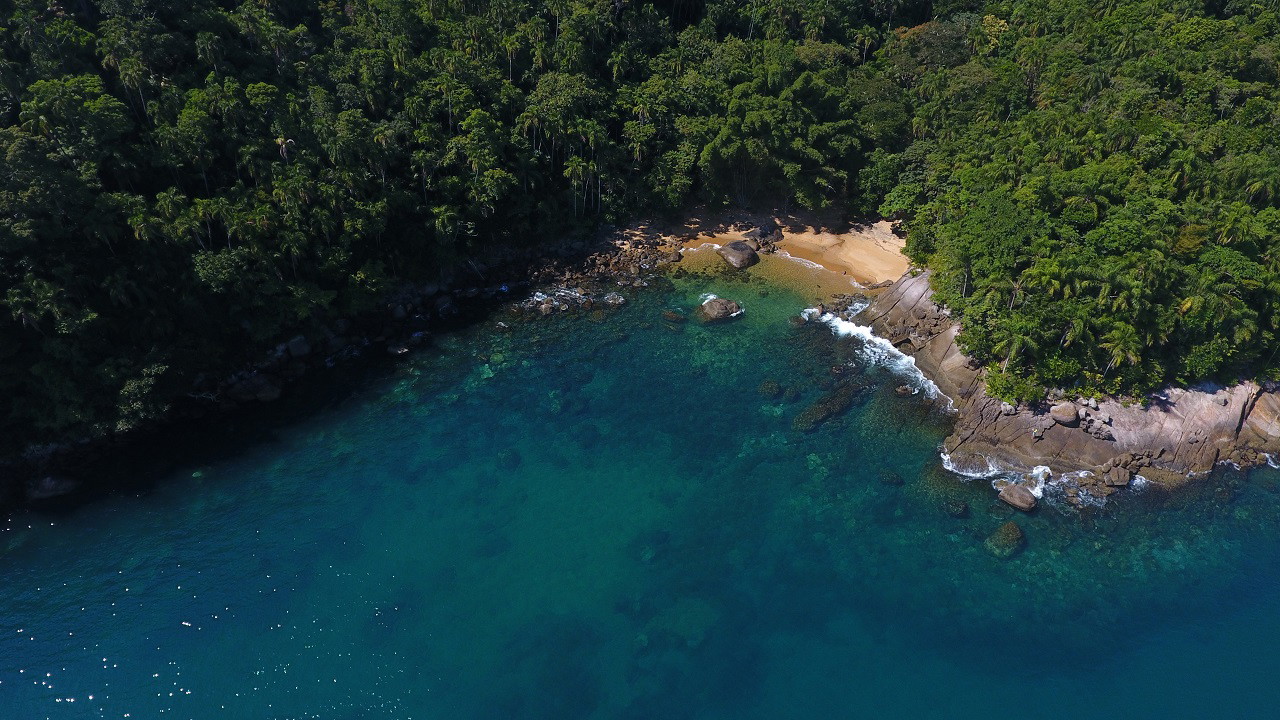
Ruins of the prison
Built in 1902, the prison was closed in 1955. Today, the ruins offer an important chapter of Brazilian history and are visited by tourists on guided tours.
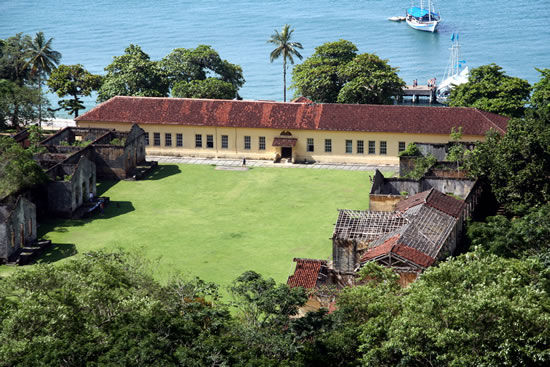

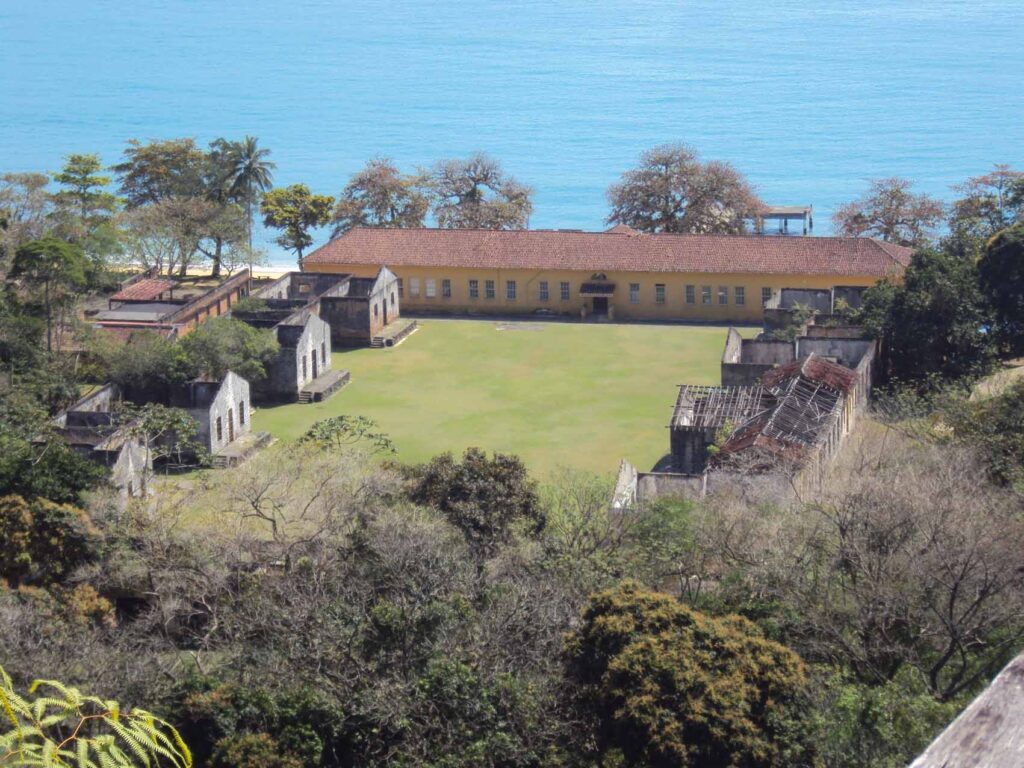
Recommended trails
- Saco Grande Trail: Starts at Praia do Presídio and leads to a viewpoint with views of the sea and sea turtles.
- Praia do Sul Trail: A trail with interpretation points on local flora and fauna, ending at a paradisiacal beach.
Diving
Anchieta Island is considered one of the best diving spots in Brazil, with depths ranging from 3 to 12 metres and water temperatures between 20°C and 28°C. The region is rich in marine life, including corals, turtles and colourful fish.
History of Anchieta Island
The island, inhabited by Indians until the early 19th century, was known as the Land of Cunhambebe, in honour of the head of the Tamoios Confederation.
The colonists named it Ilha dos Porcos and established a penal colony in 1904, which became a political prison, closed in 1955.
In 1934 the island was renamed Island of Anchieta in honour of Father José de Anchieta. In 1977, the Anchieta Island State Park was created to protect its natural wealth and the historical and cultural heritage of the prison ruins.
The island through time
1. Indigenous and colonial occupation
The island was inhabited by the Tamoios and Tupinambás Indians, who called it Tapira. The Jesuits José de Anchieta and Manuel da Nóbrega established peaceful relations with the natives, leading to the Treaty of Iperoig in 1563.
2. Transformations
In 1885 the island was renamed the Parish of Senhor Bom Jesus da Ilha dos Porcos. A Prison Colony was built in 1902, deactivated in 1914 and reactivated in 1928 for political prisoners. The island was renamed Anchieta Island in 1934.
3. Prison and rebellions
In 1942, the penal colony became the Correctional Institute of Anchieta Island. Rivalry between the inmates led to frequent conflicts, culminating in a violent uprising in 1952, which resulted in deaths and the closure of the prison.
4. Conservation and tourism
Today the island is a tourist destination, with its ruins preserved and monitors guiding visitors. It is visited by divers, researchers and tourists.
How to get there
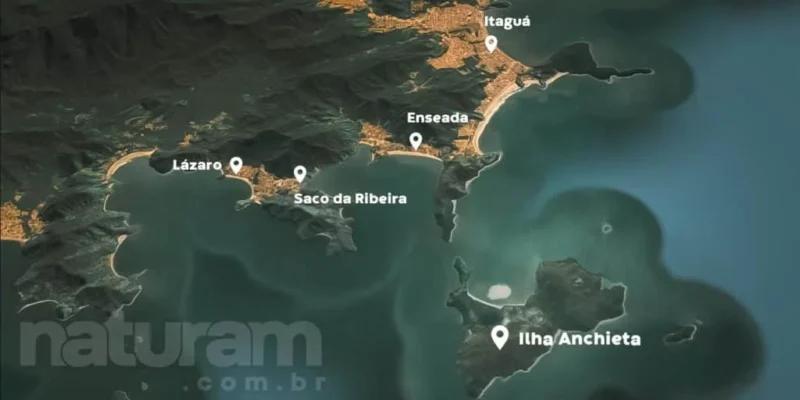
Located on the north coast of São Paulo, opposite Enseada Beach and Saco da Ribeira, the island can be reached by schooner or rented boats. To get the most out of your visit, take comfortable shoes, sunscreen and a camera.
Publicações Relacionadas
Spinner Dolphins in Fernando de Noronha: A Guide
Alcatrazes Archipelago: Secrets of Evolution Revealed
Diving in the Fernando de Noronha Archipelago
Surfing in Fernando de Noronha: Everything You Need to Know
Ponta do Boi Lighthouse in Ilhabela
Ilhabela is the hottest spot on the north coast of São Paulo State
Brazil has oceanic and continental islands
Fernando de Noronha Beaches: A Complete Guide
Trindade and Martim Vaz: Discovering the Archipelago
How to get there, when to go and what to do in Fernando de Noronha?
São Pedro and São Paulo Archipelago
The Marajó Archipelago
Wreck of the Corvette Ipiranga in Fernando de Noronha
Itamaracá Island: Your Ultimate Guide to Tropical Bliss in Brazil
The island of Santa Catarina is part of the municipality of Florianópolis
Atol das Rocas - Origin, Biology, Climate and Shipwrecks
History of Itaparica Island in the Baía de Todos os Santos
Jararaca-ilhoa: Endemic Species of Queimada Grande
This post is also on:
![]() Português
Português ![]() English
English ![]() Deutsch
Deutsch ![]() Español
Español ![]() Français
Français

